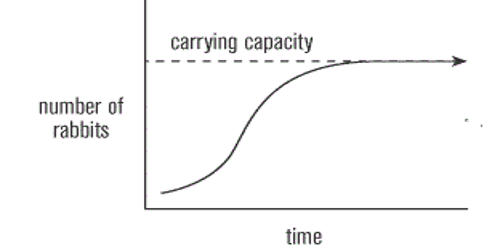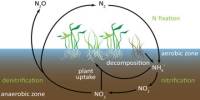Carrying Capacity is the number or quantity of people or things that can be conveyed by a vehicle or container. The carrying capacity of an environment is the maximum population size of a biological species that can be sustained in that specific environment, given the food, habitat, water, and other resources available. In nature, the population of a given area may reach carrying capacity when the maximum population size is reached for a given area with limited resources. The species population size is limited by environmental factors like adequate food, shelter, water, and mates. If these needs are not met, the population will decrease until the resource rebounds.
Carrying capacity can be affected by the size of the human population, consumption of resources, and the level of pollution and environmental degradation that results. The effect of carrying capacity on population dynamics may be modeled with a logistic function. The difference between the birth rate and the death rate is the “natural increase”. If the population of a given organism is below the carrying capacity of a given environment, this environment could support a positive natural increase; should it find itself above that threshold the population typically decreases. For example, a pond inhabited initially by ten turtles will be sustainable for the species’ population. Because water, food, and space abound, the turtles can thrive and reproduce at an exponential rate.
Population size decreases above carrying capacity due to a range of factors depending on the species concerned but can include insufficient space, food supply, or sunlight. In essence, food availability is an important variable as it affects the population size of the species. The carrying capacity of an environment may vary for different species. It does so in such a way that if food demand is not met for over a given period of time the population size will eventually decrease until the resources become adequate. By contrast, when food supply exceeds demand then the population size will soon increase and will stop increasing when the source is consequently depleted.
Carrying capacity was originally used to determine the number of animals that could graze on a segment of land. The idea has recently been applied to humans in the context of environmentalism. Several factors affect the carrying capacity of an ecosystem. These factors include food supply, water supply, habitat space, competition, physical factors (e.g. extreme heat, drought, etc.), chemical factors (e.g. pH, mineral deficiency, etc.), and anthropogenic factors. For the human population variables such as sanitation and medical care are sometimes considered as part of the environment.
















